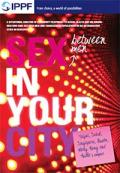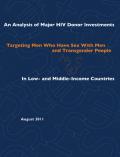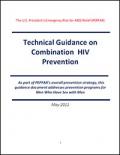Publications on Men Who Have Sex With Men (MSM)

Resource | Publications,
There is now overwhelming evidence that the epidemic among MSM (Men who have Sex with Men) is well established and increasing. While some actions are now being put in place on a regional and country basis to address prevention amongst MSM, there has been very little work done in regards to the issues for MSM who are already positive. To fulfil this gap, community-based organisations of positive people linked to the Asia Pacific Network of People Living with HIV (APN+) through a participatory research methodology, learned to design and implement a study to explore the issues affecting positive MSM in the region.

Resource | Publications,
After peaking at 3.2 percent in 1997, Cambodia's HIV prevalence among men and women aged 15 to 49 had dropped to 0.9 percent; it is expected to decline to approximately 0.6 percent by 2012 (Ministry of Health [MOH] 2007). HIV in Cambodia has evolved from a generalized epidemic to one concentrated among MARPs: men who are clients of sex workers as well as their spouses; people who inject drugs; male, female, and transgender sex workers, and MSM.













